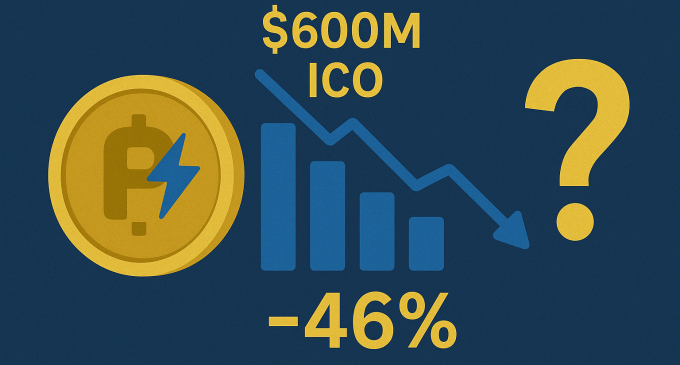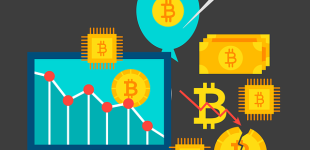
Introduction
Pump.fun became the latest sensation in the memecoin ecosystem after launching its official PUMP token, drawing immense market attention for what was labeled one of the fastest and most successful ICOs in recent memory. In just under 12 minutes, the token managed to rake in a staggering $600 million, setting social media, crypto forums, and DeFi circles abuzz with excitement. Yet, the excitement was short-lived. In less than a week, PUMP lost nearly half of its value, crashing over 46 percent and falling below its initial launch price. This article provides an in-depth look at what happened to Pump.fun’s PUMP token, examining every angle from the launch mechanics to whale activity, current market sentiment, and long-term projections.
The Rise Of Pump.Fun And The Genesis Of PUMP
Pump.fun is a Solana-based platform designed to simplify and gamify the launch process of memecoins. It introduced an automated and decentralized way for creators and users to bring tokens to life, sparking rapid virality and meme-fueled engagement. Over the past few months, Pump.fun had already gained significant traction, hosting thousands of token launches and attracting both retail and influencer investors seeking quick gains.
The launch of its native token, PUMP, was positioned as the ultimate reward mechanism for users of the platform. With an airdrop-based distribution system and a massive presale event, PUMP was expected to serve not only as a governance token but also as a major liquidity asset within the Pump.fun ecosystem. Users believed that PUMP would become the beating heart of this thriving launchpad.
When the PUMP ICO began, investors flooded in. The total cap of $600 million was reached in less than 12 minutes, signaling both enormous enthusiasm and deep pockets among crypto traders. But as history has often shown in the world of crypto, such euphoric momentum can sometimes be a precursor to steep corrections.
The Mechanics Behind The PUMP Token Launch
Unlike traditional ICOs or IDOs that rely heavily on venture backing or centralized exchanges, Pump.fun chose to use Solana’s native DeFi infrastructure to handle the presale and airdrop. The tokenomics were advertised as being community-centric, with a large portion of tokens distributed to early users of the platform based on participation levels and usage history.
Pump.fun’s airdrop featured tiered eligibility, where users with higher activity volumes received larger token allocations. The presale pricing was set attractively low, drawing in thousands of wallets looking for rapid price appreciation. Once the token hit the open market, its price skyrocketed briefly before heavy sell-offs began to dominate the charts.
A core issue soon emerged. Because airdropped tokens had little to no vesting schedule, many recipients rushed to liquidate their holdings. This flood of sell pressure severely impacted the price and created a downward momentum that became hard to stop.
Whale Activity And Dump Patterns
Perhaps the most impactful element in PUMP’s early price decline was the behavior of large token holders, often referred to as whales. Blockchain analytics revealed that several wallets with massive token allocations began transferring their PUMP holdings to centralized exchanges almost immediately after launch. These moves were often followed by large-volume sell orders that spooked retail investors and exacerbated the downturn.
Data showed that more than $160 million worth of PUMP was transferred to exchanges within the first 72 hours. Some of these addresses had received disproportionately large airdrops, leading to speculation that insiders or early testers had received privileged allocations. As selling pressure mounted, confidence among smaller investors crumbled.
Further compounding the issue was the lack of strong liquidity support. Despite the $600 million raised, much of that capital was fragmented across thousands of wallets, making it difficult for the market to stabilize quickly once the freefall began. The result was a steep 46 percent decline in the token’s market value, with some estimates suggesting even greater losses depending on the entry point.
Community Reactions And Market Sentiment
The crypto community reacted to the price crash with a mix of anger, disappointment, and resignation. On Reddit, Telegram, and X (formerly Twitter), users expressed frustration at what they perceived as poor tokenomics and irresponsible distribution strategies. The lack of a vesting schedule for airdropped tokens was a common point of criticism, as was the seemingly hasty rollout of the token with minimal investor protections.
Others took a more nuanced view, pointing out that memecoin ecosystems often operate outside traditional financial logic and are inherently speculative. To many seasoned crypto traders, the PUMP collapse was not surprising, given the frenzy leading up to the ICO. In their view, Pump.fun had simply replicated the typical boom-and-bust cycle that many memecoins undergo.
Still, some in the community remained hopeful. They argued that if Pump.fun could implement stronger governance, improve liquidity support, and perhaps introduce staking or vesting mechanisms, the PUMP token might yet recover. Whether such sentiment translates into action, however, remains to be seen.
Competitor Landscape And Shift In Launchpad Dominance
Adding to Pump.fun’s woes is the rapid rise of competitors. Notably, Let’s Bonk has emerged as a strong alternative launchpad within the Solana ecosystem. In recent weeks, Let’s Bonk overtook Pump.fun in new token launches, commanding over 64 percent of Solana’s memecoin launch market share. Pump.fun, which had previously held more than 90 percent dominance, now sits at just 24 percent.
This shift signals more than just competition. It reflects changing user preferences and growing skepticism toward Pump.fun’s token economy. As new launchpads emerge with improved mechanics and safety nets, users may be more inclined to explore alternatives, especially if those platforms promise reduced risk and better reward alignment.
This competitive pressure could force Pump.fun to innovate quickly or risk losing its early mover advantage. Introducing more robust liquidity locks, user incentives for holding rather than dumping, and mechanisms that curb whale dominance could help it regain community trust.
Future Outlook: Can PUMP Recover?
Despite the steep decline in price and the flood of negative sentiment, the future of PUMP is not entirely bleak. Many projects in crypto history have suffered initial crashes only to stage strong comebacks with proper management and community re-engagement. If Pump.fun can respond constructively to feedback, redesign its tokenomics, and introduce new utility for the PUMP token, there is still potential for a turnaround.
The platform continues to enjoy strong user activity, and its role as a leading memecoin launchpad is not entirely diminished. Additionally, developers have hinted at upcoming features such as PUMP staking, DAO governance, and liquidity mining—all of which could restore some level of utility to the token and incentivize longer-term holding behavior.
However, the recovery will not be easy. Investor trust has been damaged, and without meaningful changes, PUMP may continue to struggle under the weight of its early overhype. A clear communication strategy, transparent roadmap, and token vesting adjustments will be critical if the team hopes to repair sentiment.
Lessons Learned From The PUMP ICO Episode
The case of Pump.fun and the PUMP token provides a cautionary tale for both investors and developers in the cryptocurrency space. For investors, it underscores the need to approach high-hype tokens with caution, particularly when vesting structures are absent and whale behavior is unchecked. For developers, it highlights the importance of responsible token distribution, community alignment, and post-launch support.
ICOs and memecoins are inherently risky, but with proper planning and execution, they can also drive innovation and community building. PUMP’s trajectory reminds everyone that launching a successful token involves more than raising capital—it requires sustained commitment to fairness, transparency, and long-term value creation.
Conclusion
Pump.fun’s PUMP token has experienced one of the most dramatic price reversals in recent memecoin history. From a record-setting $600 million ICO to a sharp 46 percent crash, its story reflects both the immense potential and deep volatility of the crypto landscape. Whether PUMP can rise again depends largely on how the team addresses the challenges ahead and how the community responds.
While the hype wave may have receded, the opportunity for reinvention remains. By learning from early missteps and rebuilding trust, Pump.fun could still shape the next phase of memecoin culture on Solana. But the window for redemption is narrowing fast, and only time will reveal whether PUMP becomes a historic rebound or a cautionary footnote.







There are no comments at the moment, do you want to add one?
Write a comment